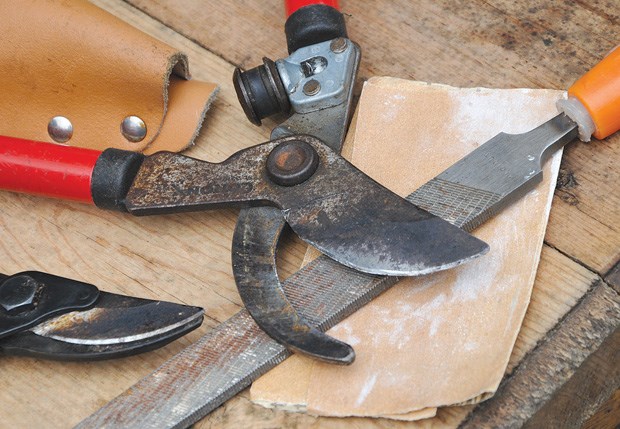Plan to prune in June is what I tell anyone looking to prune certain trees, shrubs and vines.
More specifically, plan to prune during June, July and August if you want to control the growth of thin barked trees, woody climbing vines and many deciduous shrubs.
Contrary to popular belief, spring and fall are not the best times to prune most plants. The best two seasons to prune are during dormancy in winter and during active growth in summer. Winter pruning induces an invigorated growth response from plants, which is used to rebuild branching structure or encourage vigour. Summer pruning causes a suppression of growth, which is used to control size and vigour.
Proper pruning is not just about choosing the correct season to prune. Good pruning is a combination of art and science. I have always trained my students to prune to achieve the desired results while leaving the plant with a natural and unpruned appearance, which displays the art of pruning. It is harder to accomplish than you think. Of course some plants are pruned to demonstrate a specific form, like an espaliered fruit tree, formal hedge or some type of topiary. But those pruning forms are the exception. Most plants should be pruned to attain a naturalistic, albeit a stylized, form. Plants that are pruned to look pruned are eyesores that cause a blemish on the character of the garden. Sadly, the hedge-shearinghack-n-whack pruner thinks they are creating something beautiful. Unfortunately, we all have to look at those unnatural and objectionable creations of landscape valium.
The science of pruning is well established but not widely understood. Choosing the correct time of year to prune is part of the science. For thin barked trees like birch, Japanese maples, dogwoods, Stewartia species, Styrax species, magnolia and others, summer pruning affords the opportunity to prune to control size without causing disease or inducing sap bleeding. By far the biggest value of summer suppression pruning is the vigour control, which cannot be attained at any other time of year.
Pruning science is also about choosing the correct type of cut. There are only two types of cuts in the known universe: a heading cut and a thinning cut. A heading cut removes the end of any branch to a lower bud, which induces bushiness behind the cut. Or, if you are a hacker, you'll cut the branch anywhere and hope it regrows behind the cut. Heading cuts are used to make plants bushier or more dense but not for size control. Thinning cuts remove the end of the branch down to a lower lateral branch which redirects growth into the remaining branch without inducing bushiness behind the cut thereby controlling size. Careful selection of the lateral is required for the thinning cut to look natural. It is a process I call "caliper assimilation," which means cut back to a lower lateral that is at least half to two-thirds of the thickness of the end of branch that is being thinned off. Caliper assimilation maintains a natural appearance of the thinned branch.
No discussion of pruning would be complete without talking about cleaning and sharpening tools before pruning. How often have you seen a gardener arrive at your home to prune and pull out some dirty pruning tool and start working right away? If you do not clean your tools before pruning, then there is a potential to spread disease from the dirty tool to the cut. I do not use bleach, isopropyl alcohol or any other nasty poison. I use Lysol (non-CFC) combined with sandpaper for metal. Spray the tool's cutting edge and anvil and work the sandpaper in small circles to grind off the old plant sap. Wipe the tool clean, and reapply and repeat. The blade should come out shiny silver once it is fully cleaned.
I developed this field treatment to clean pruning tools way back when I was the director of Park and Tilford Gardens as a way to teach Capilano students how to keep their tools clean, functioning properly and disease-free.
Sharp pruning tools are also important, unless you like torn, ragged and uneven pruning cuts that inflict cell damage.
All the science and art in the world is useless without a rational reason to prune. It is a myth that all plants need to be pruned. On the contrary, when the right plant for the right place is thoughtfully chosen, little or no pruning will be required over its lifetime. I am a realist and understand that people are going to do what they want with their plants. But if you appreciate beautifully pruned plants then my advice will help you realize the beauty of your beasts.
Todd Major is a journeyman horticulturist, garden designer and builder, teacher and organic advocate. [email protected]



